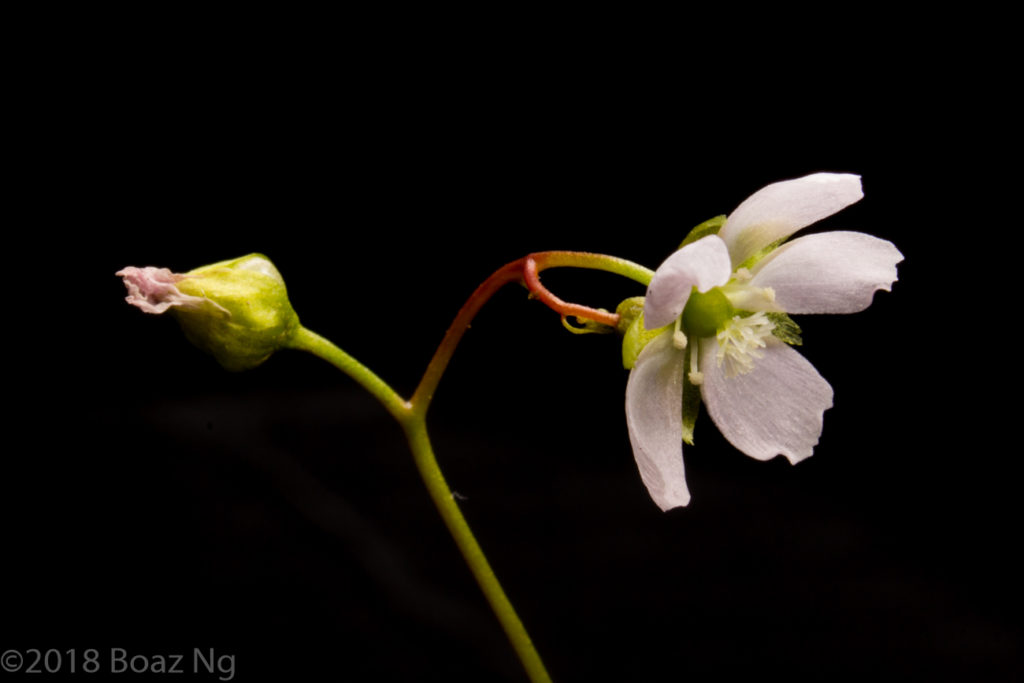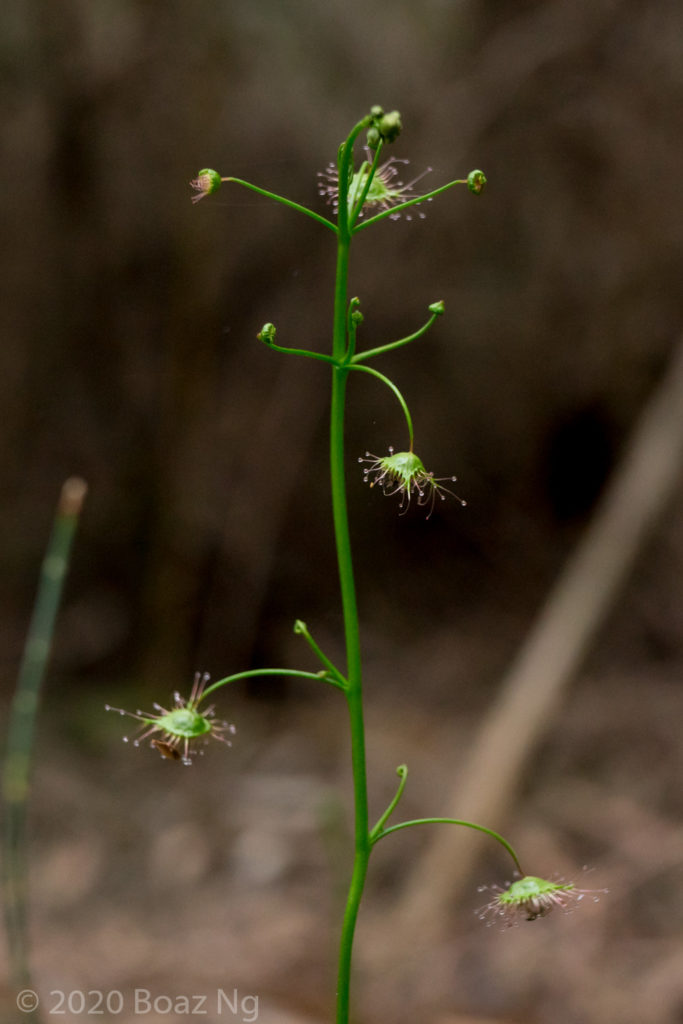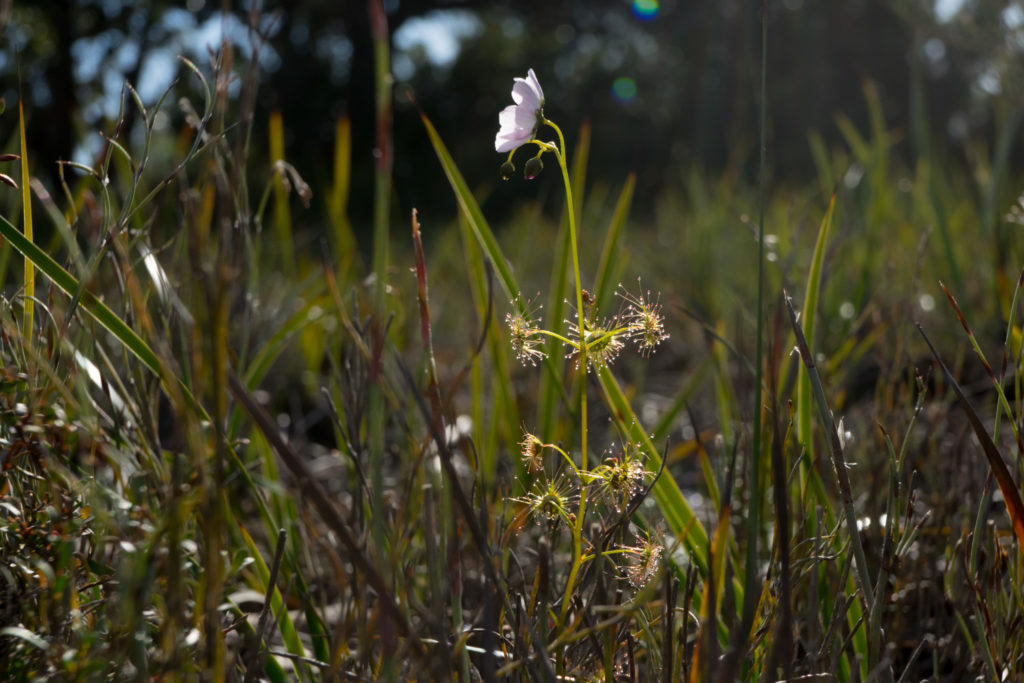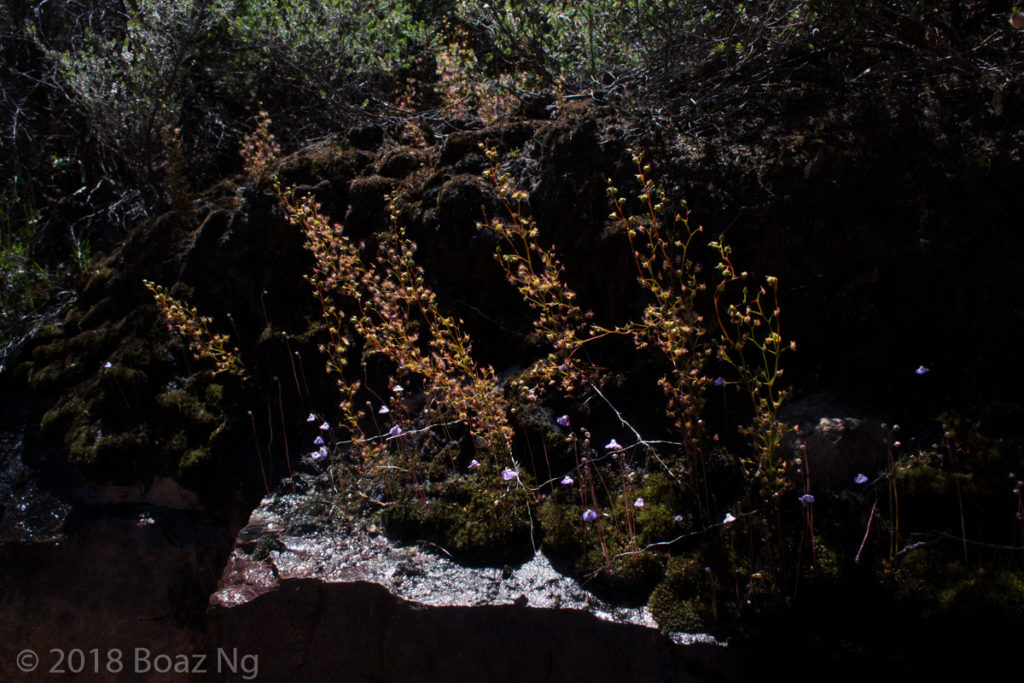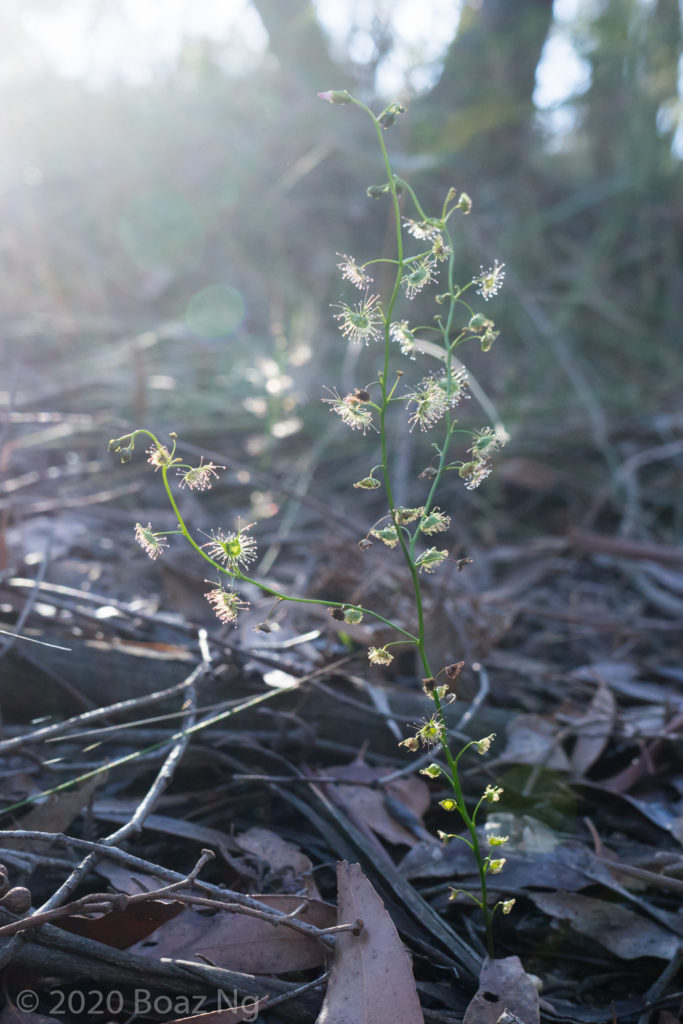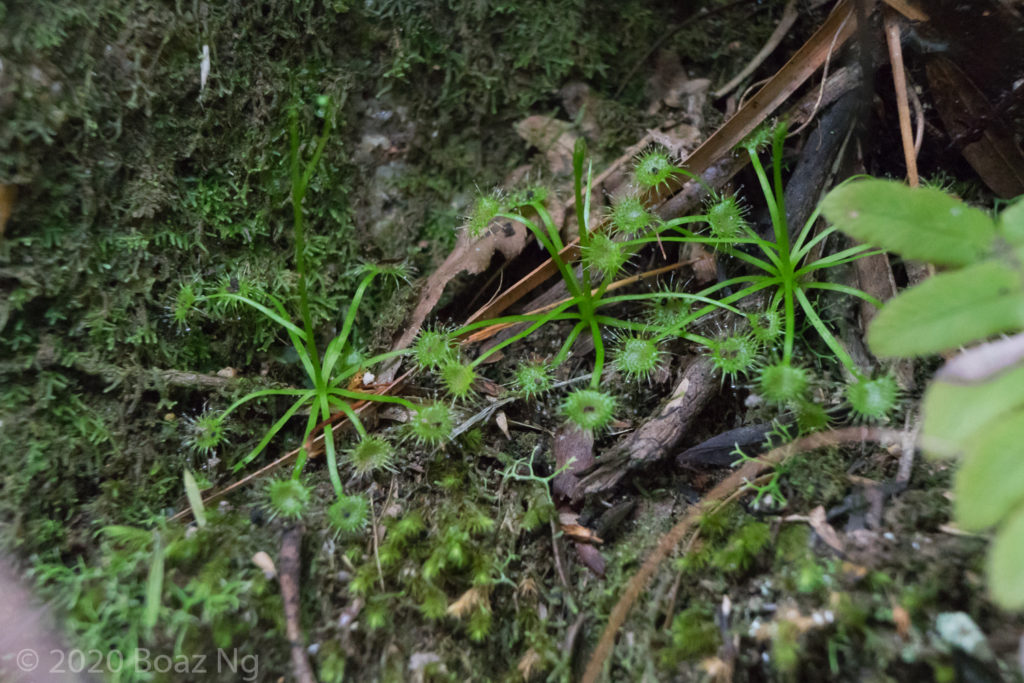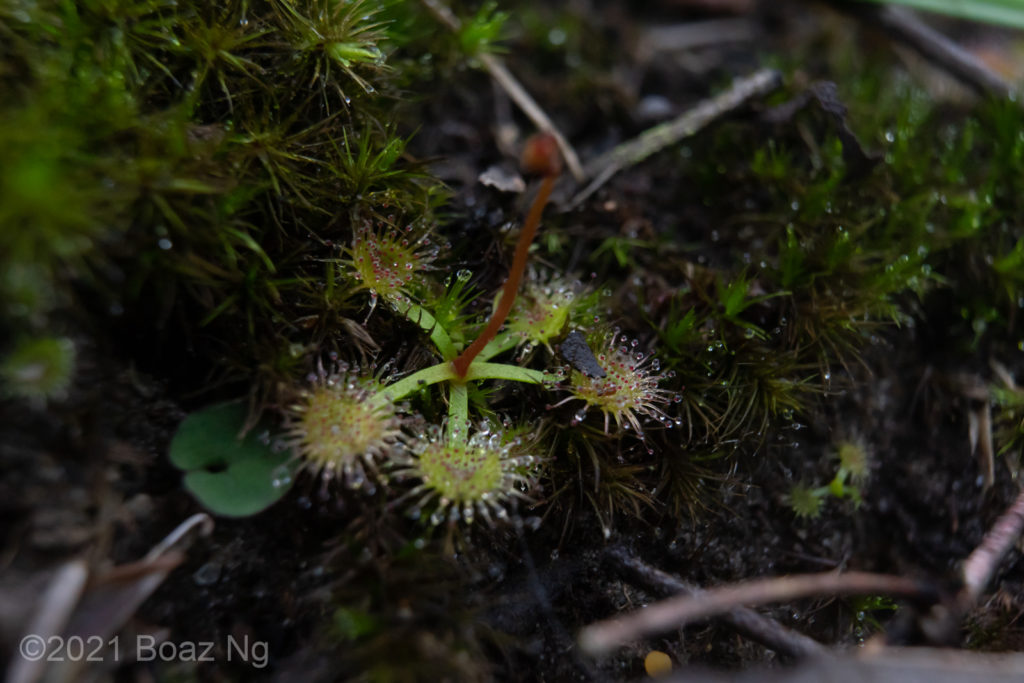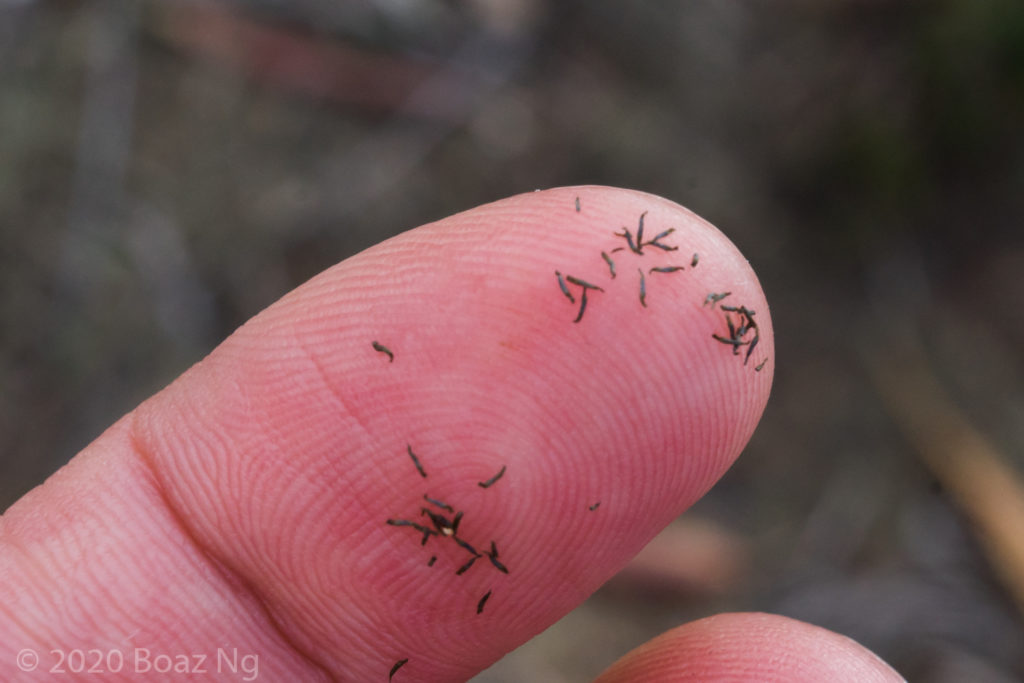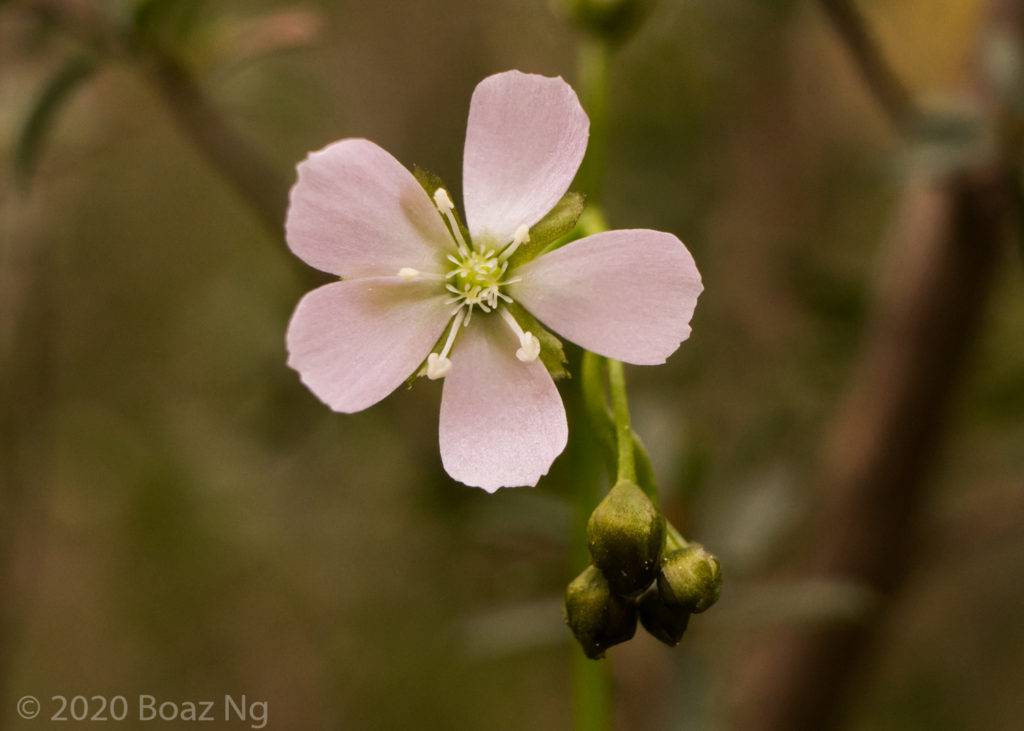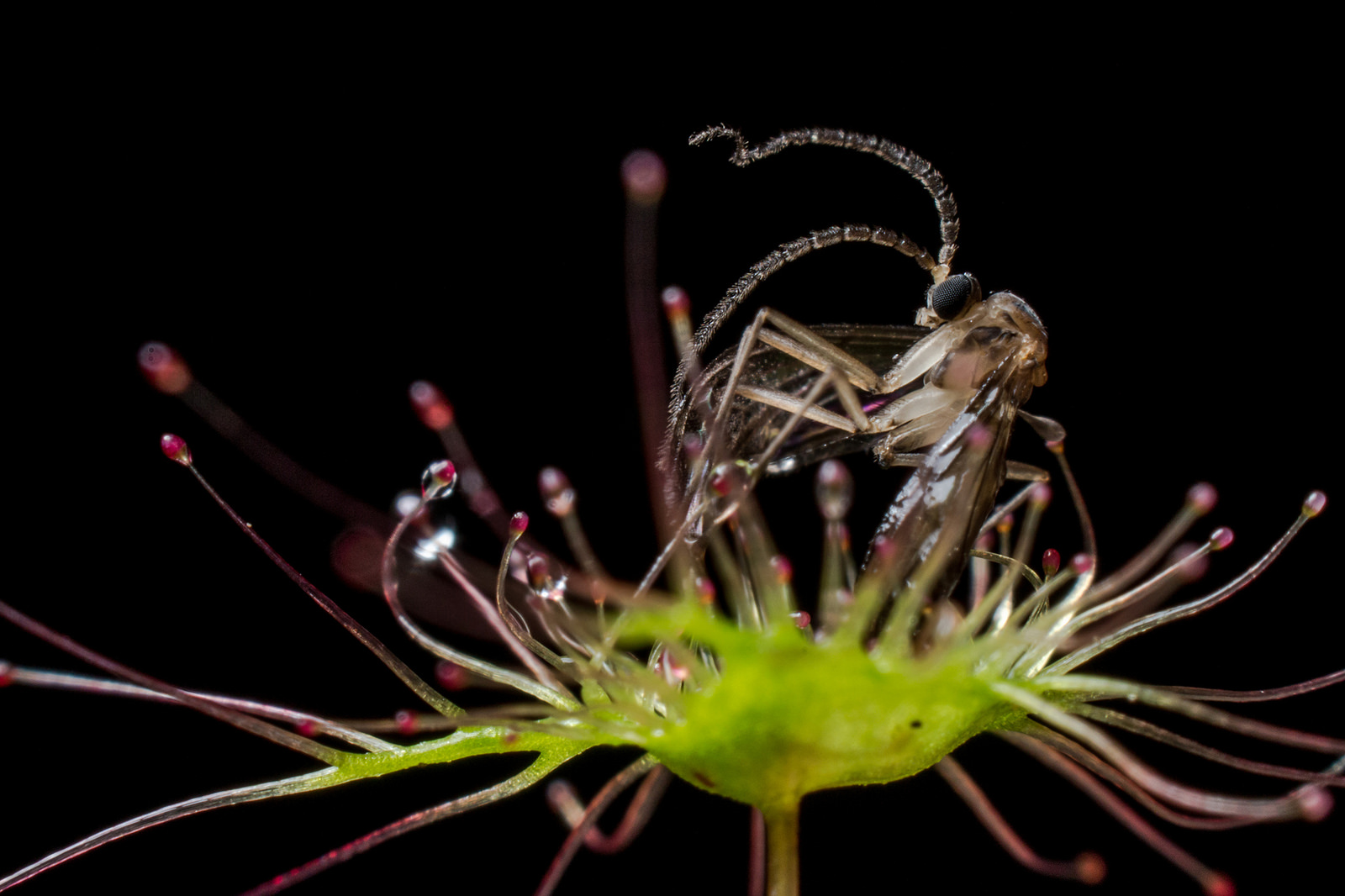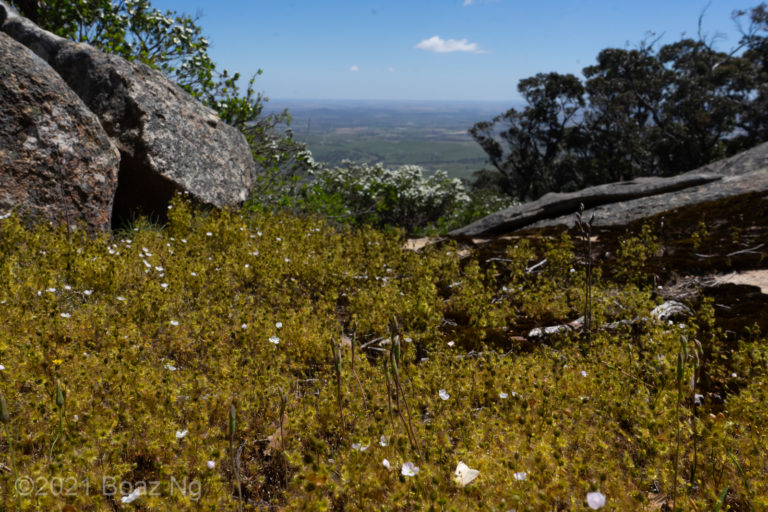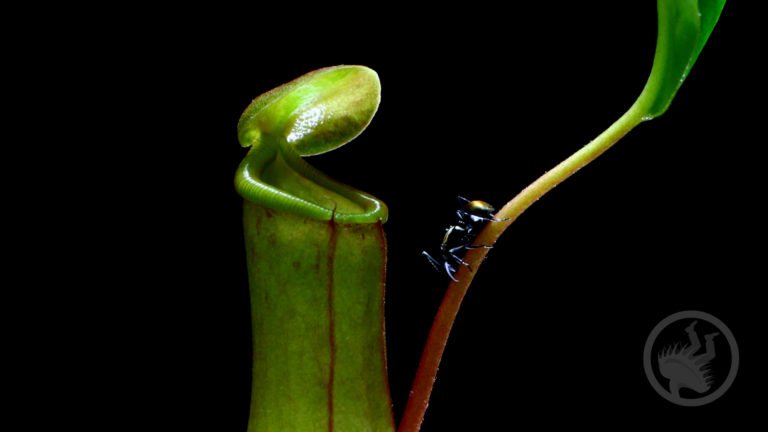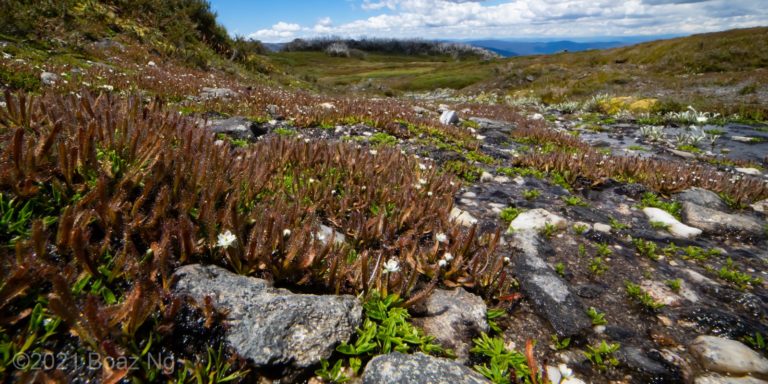Drosera auriculata is a winter growing tuberous species from eastern Australia.
Drosera auriculata grows in a wide variety of niches, including temperate rainforest, schlerophyll forest and heathland. It is variable in morphology, although usually bright green and floppy in darker environments, and robust with an olive colouration in exposed places. In some locations, the upper stems readily branch. The flowers are white to pink and appear once the main stem has reached its final height. The basal rosette is generally sparse, although this is highly variable. Oftentimes, the largest specimens of a population do not form a basal rosette at all. The species is winter growing, although it can persist into summer if water is available.
Whilst previously regarded as a mere subspecies within the Drosera peltata complex, the taxon displays stable morphological features across its range that distinguish it as a species in its own right.
Amongst the erect tuberous species of the Australian east coast, Drosera auriculata is distinguished from its relatives firstly by its glabrous sepals, which sometimes yield tiny sessile glands. Drosera auriculata is different from Drosera lunata (which also has glabrous sepals) by its seed shape – the former species has a distinctive long and linear seed, as opposed to the round seeds of D. lunata.
